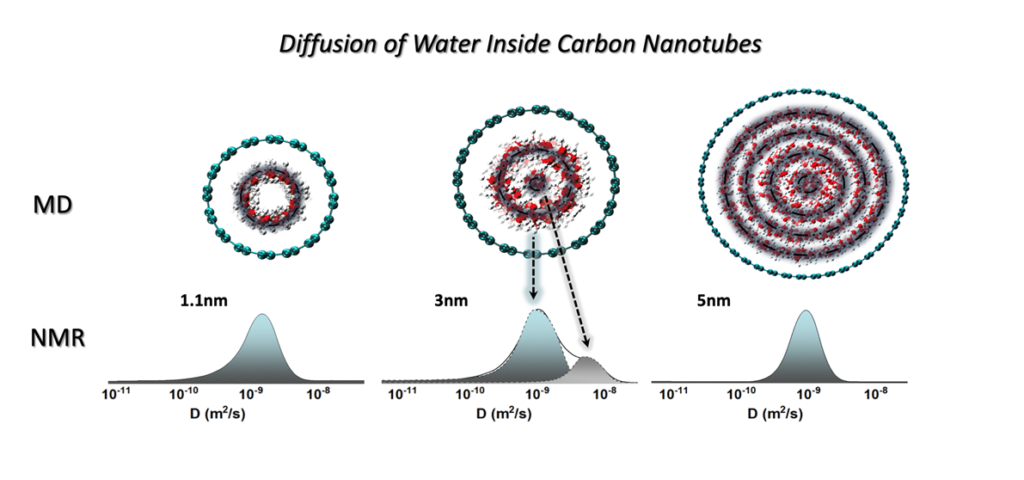Nanofluidic processes in restricted geometries
Confined in a narrow channel, water separates into sheets with peculiar properties
by Anashe Bandari
https://aip.scitation.org/doi/10.1063/10.0001492
(devoted by Scilight of the American Institute of Physics to our publication: “The peculiar size and temperature dependence of water diffusion in carbon nanotubes studied with 2D NMR diffusion-relaxation D – T2eff spectroscopy,” by L. Gkoura, G. Diamantopoulos, M. Fardis, D. Homouz, S. Alhassan, M. Beazi-Katsioti, M. Karagianni, A. Anastasiou, G. Romanos, J. Hassan, and G. Papavassiliou, Biomicrofluidics (2020). The article can be accessed at https://doi.org/10.1063/5.0005398.)

Water dynamics in hydrophobic nanochannels play a role in drug delivery and water treatment technologies. The dependence of this microscopic behavior on the channel size can have important nanofluidic effects but has previously been studied mostly theoretically. By conducting NMR diffusion-relaxation measurements, Gkoura et al. compared water’s diffusion behavior in carbon nanotubes (CNTs) of various sizes.
“Monitoring water diffusion in hydrophobic nanochannels is important in many applications,” said author Jamal Hassan. “Until now, there has been no experimental methods with atomic scale resolution to monitor diffusion of water molecules into mostly hydrophobic nanochannels.”
For CNTs with diameters between 3.0 and 4.5 nanometers, the group observed that water separates into concentric sheets of different diffusion coefficients with the outer sheet more rigid and the central sheet more liquid-like. Further, the diffusion coefficient in the central sheet can reach astonishingly high values, up to four times that of bulk water. As the diameter of the nanotube increases beyond this range, the diffusion coefficients of the separate sheets begin to converge, leading to uniform dynamics similar to bulk water.
“The stratified water arrangement inside the CNT channels is difficult to explain,” said author George Papavassiliou. He and Hassan conjectured the interplay between two opposing effects – hydrogen bonding between water molecules, and repulsive Coulomb forces, which become important when water squeezes into nanoscale channels – may be the root of these extraordinary water molecule configurations and dynamics.
CNTs have uses in applications like water desalination, molecular sensing and nanopore DNA sequencing. Combined with molecular dynamics simulations, the present diffusion-relaxation experiments can help to elucidate their molecular-scale nanofluidic properties for such applications.